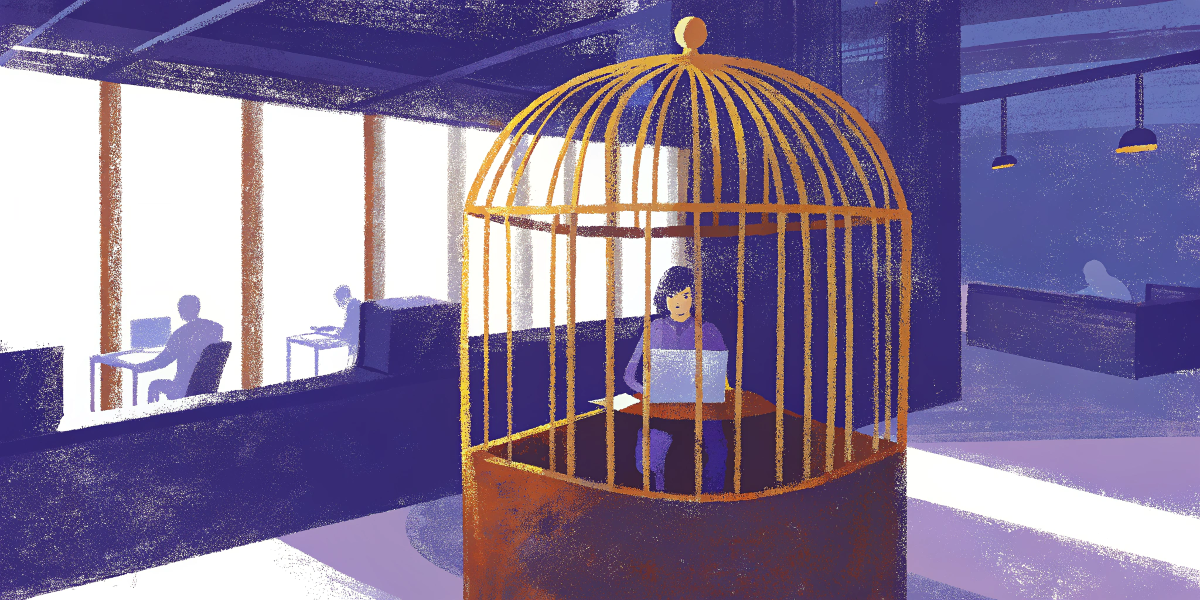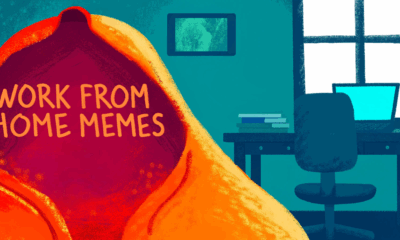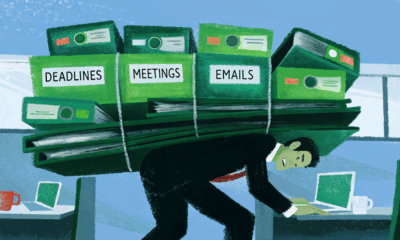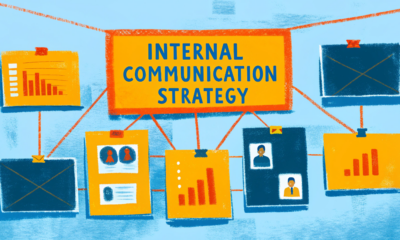Onboarding, Benefits & Retention
Career Growth Is a Retention Strategy – Not a Perk

Just paying people isn’t enough anymore.
Naturally, pay is still critical — it’s the foundation we all require. But even the best paycheck can become meaningless when every workday merges into the last one. When progress stops and the future turns into a fog, motivation disappears.
People come to work for the paycheck. They stay for the purpose.
At the core of that purpose is a deep, human truth — the need to grow, to improve, and to be a component of something bigger than a job title. It’s the need to know their time and effort are heading somewhere meaningful.
But when that sense of progress disappears — when roles become routines repeated year after year — something quietly breaks inside. Confidence fades, energy drains, and even the most talented begin to wonder if they’ve outgrown the space they occupy.
Think of your employee as a bird in a cage that’s grown too small. First, they manage. Then they withdraw. Finally, they burn out or break out.
This is the silent crisis at the root of so many retention problems today. It’s not perks or promises that are the problem. It’s the absence of a clear, personal way forward.
Career development isn’t a perk. It’s a guarantee — a guarantee that says, “We see you where you are, and we believe in where you can go.”
In the pages ahead, we’ll explore why professional growth has become one of the most powerful retention strategies in the modern workplace. You’ll find practical, honest ways to build personalized career development programs that truly resonate with your people. Because in today’s talent market, investing in your employees’ growth isn’t optional — it’s essential.
After all, people don’t leave because things get hard.
They leave when they stop growing.
What career growth means to employees today
Career development is not an abstract principle or vague advantage. It is concrete, observable progress — learning new skills, overcoming major challenges, and moving along a clear path that aligns with personal and professional goals.
Employees today require more than a set of things to do. They require understanding how their work connects to their personal and career development. They seek experiences that allow them to learn new things and position themselves for their target next jobs.
This shift is especially potent with younger generations like Gen Z and millennials. They don’t always expect lifetime employment, but they do expect lifetime learning. They need visibility on where they can go and confidence that their organization is really invested in their growth.
Phenomena like the Great Resignation and quiet quitting reflect a more underlying truth: career development has become an unstoppable retention driver. Without career growth opportunities that matter, disengagement follows and attrition increases.
The challenge now is to break out of the straitjacket of one-size-fits-all training and craft customized, high-impact growth experiences — ones that actually resonate with people and allow them to envision a future they wish to remain a part of.
Growth builds loyalty — the real connection between development and staying power
People don’t quit companies. They quit feeling trapped.
When employees feel there’s a clear and reachable path ahead of them — and that someone’s in their corner in the process — loyalty is no longer forced; it springs naturally. Professional development stops being solely about learning new things and becomes a sign that the company actually believes in them and what they can do.
A culture of work that really is supportive of growth and wellness is a total game-changer. When people can stretch, learn, and bring their full selves to work, they feel more connected to the company.
Statistics bear it out. Companies that make internal career promotions transparent and accessible hold onto employees nearly two times longer than those that don’t. In fact, 94% of employees report they are more likely to stay with a company if it invests in their career development.
To sum it up, here are some essentials that tie career growth to why people stick around:
- Clear career roadmaps that show what’s possible and how to get there
- Ongoing learning opportunities that actually matter to the person
- Managers and leaders who invest time and energy in development
- A culture that values trying, failing, and learning, not just hitting targets
- Programs that make it easy to move around inside the company, sideways or up
When employees actually believe in a future here, with real chances to grow and learn, they stay charged, motivated, and in for the long haul. It’s not just about numbers of retention. It’s about creating an organization that hears, respects, and supports.
The war for talent today delivers this simple message: if you don’t invest in your people, somebody else will.
From Generic to Genuine: Building a Career Growth Strategy That Retains
Many career development programs miss the mark. They read generic, disconnected from what staff really want, or checklist-based rather than impact-based. For career advancement really to become an instrument of retention, it must be meticulously designed and profoundly personalized.
The first is to observe the signs before one of your workers checks out mentally or starts looking elsewhere. This is to listen for the subtle signs — shifts in attitude, dips in involvement, or lack of initiative suddenly. People who know their staff well can spot those early warning signs.
Training managers to see potential is crucial. It is not crystal balls or fairy dust but open, ongoing dialogue and actually listening to how employees grow, solve problems, and interact with others. Managers must learn to ask the right questions, listen intently, and connect everyday performance with possible futures.
Technology can assist. AI programs and analytics can spot risks or locate holes in skills, but never replace human judgment. Instead, they are an extra pair of eyes to allow managers to prioritize their focus where it is most important.
Recognizing the signs, training managers, and using the right tools is where it starts, but retention doesn’t happen by observation alone. It takes structure. Intention. A plan that people can believe in.
Let’s break it down.
How to retain talent through real career growth: A practical, honest guide
Let’s be real — career growth has shifted from being a nice bonus to becoming the glue that holds your best people in place. You can offer good salaries, flexible hours, even top-tier benefits, but if employees don’t see a future with you, they’ll eventually walk. And sometimes, they mentally check out long before they hand in a resignation letter.
Here’s how to rethink your approach and start building a career development strategy that actually works — for your people and your business.
Start by getting clear on where you are
Don’t guess. Don’t assume. Start with a hard look at your current landscape.
- Do employees know what career paths exist inside your company?
- Are your learning programs relevant or just sitting there untouched?
- Do people feel like they’re growing — or just surviving?
Before you launch another training initiative, find out what’s landing and what’s not. Talk to your people. Run a short survey or hold listening sessions. You’ll hear what’s really missing — and it often has less to do with content and more to do with direction.
What to do next: Audit your development offerings. Ask where people feel stuck. Map which roles have no clear “next step.” That’s your starting point.
Personalize growth — or risk losing attention
One of the biggest mistakes? Thinking everyone wants the same kind of progress.
Some people want to climb the ladder. Others want to deepen expertise, change tracks, or just have more autonomy in what they do. Career growth isn’t linear anymore — and your approach shouldn’t be either.
What to do next:
- Stop using the same templates for everyone.
- Segment your people by career stage, not just job title.
- Build development plans with the person, not just for them.
When employees feel seen for who they are and where they want to go, they’re far more likely to stay and invest their energy in the work.
Show them what’s possible — and how to get there
The silence around “what’s next” is where motivation dies. Even your most driven team members can burn out or drift away if the path forward is murky.
Don’t let growth be a guessing game. Make career paths visible. Outline what advancement looks like — and not just vertically. Show lateral moves, project rotations, mentoring routes.
What to do next:
- Create simple, visual maps for progression.
- Be transparent about requirements for internal moves.
- Encourage managers to have ongoing career conversations, not just annual check-ins.
When people know what’s ahead and believe it’s real, they’ll stay to pursue it.
Keep growth alive between promotions
Not every person will be promoted next quarter — and they shouldn’t have to be. But that doesn’t mean they can’t grow.
Career development isn’t a big leap. It’s dozens of small moments that build momentum: leading a project, shadowing a peer, joining a cross-functional team.
What to do next:
- Give people access to challenges, not just courses.
- Build learning into real work.
- Make sure your managers know how to spot — and create — those opportunities.
Train managers to spot potential and spark growth
Most employees don’t leave because of one bad day — they leave because no one saw what they were capable of. Managers are often the first (and only) line of sight. But if they’re not equipped to coach and support development, you’re flying blind.
What to do next:
- Teach managers to listen for growth signals.
- Give them tools for career conversations, not just performance reviews.
- Recognize and reward the managers who actively grow their teams — not just hit targets.
Great managers grow great people. It’s that simple — and that hard.
Stop measuring the wrong things
Tracking how many people took a course won’t tell you if they feel like they’re progressing. By the time someone resigns, the opportunity to re-engage is gone.
What to do next:
- Measure clarity around growth, not just training participation.
- Include development in engagement surveys — and act on the results.
- Look at internal mobility: Are people moving, evolving, re-skilling? If not, why?
Data is only helpful if it tells you something you didn’t already know.
The biggest shift HR and leadership teams can make right now is to stop treating career growth like a benefit — and start treating it like a responsibility.
Because when employees feel like their future is visible, supported, and valued, they stay. They engage. They stretch. They build things with you instead of looking elsewhere.
And that’s not just how you keep people. That’s how you build the kind of workplace they want to grow old in.
Growth is the new glue
Retention has never been about locking people in place. It’s about building something they want to be part of. A space where they see themselves learning, evolving, and moving forward — not just working to stay afloat.
Career development isn’t a bonus you hold out in job postings. It’s a long-term commitment. A quiet but powerful message that says: We see you here. We believe in your future. Let’s shape it together.
That is the shift HR and leadership teams are being challenged to make — to stop viewing growth as a privilege and start seeing it as a shared responsibility. Because when people sense that their goals can be realized here, when they can envision a way that respects both who they are and who they can become, they stay. They commit. They grow roots.
Employees today aren’t just looking for titles or training budgets. They’re looking for alignment — between their values and yours, between their personal journey and your company’s mission. When that alignment exists, it becomes something bigger than loyalty. It becomes a sense of belonging and purpose.
If people feel invisible, trapped, and burned out, they will leave — regardless of what is provided in the way of competitiveness. But if people feel visible, challenged, and cared for, they’ll stay even when uncertainty looms. Not out of obligation, but because they genuinely want to build something with you.
And here’s the truth: your people are your greatest asset. They are the living force behind your culture, your ideas, your growth. They don’t just pay the bills. They drive the vision forward. So invest in them — water the roots, fan the promise, and have faith they’ll pay the investment back with devotion, imagination, and power.
Because people stay where they can grow.
And growth, above all else, is what holds it together.

-

 Collaboration4 months ago
Collaboration4 months ago18 Experts Share Tips for Businesses Switching to Remote Work
-

 Communication6 months ago
Communication6 months ago6 Communication Plan Templates With Examples
-

 Collaboration5 months ago
Collaboration5 months ago30 Work From Home Memes: Funny Work Memes to Make You Laugh
-

 Collaboration6 months ago
Collaboration6 months ago6 Tips for Lifting the Burden of Too Many Responsibilities
-

 Productivity5 months ago
Productivity5 months agoSuper True Mental Health Memes You’ll Probably Relate To
-

 Collaboration7 months ago
Collaboration7 months ago35+ Collaboration Quotes to Celebrate Teamwork
-

 Collaboration7 months ago
Collaboration7 months ago7 Easy Strategies for Effective Team Communication
-

 Collaboration7 months ago
Collaboration7 months agoThe Definitive Guide to Creating an Internal Communication Strategy




